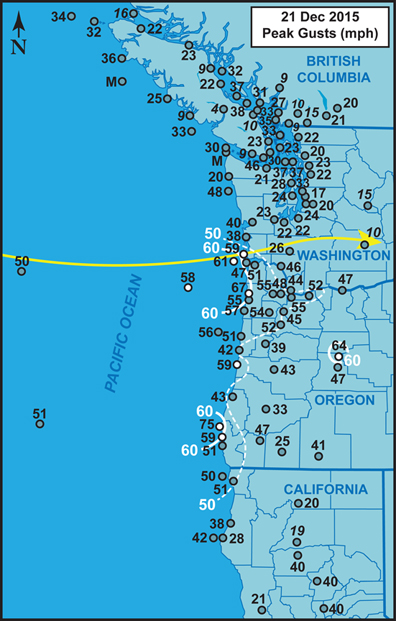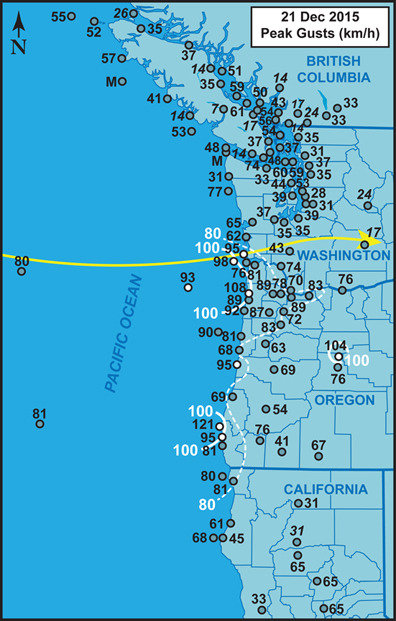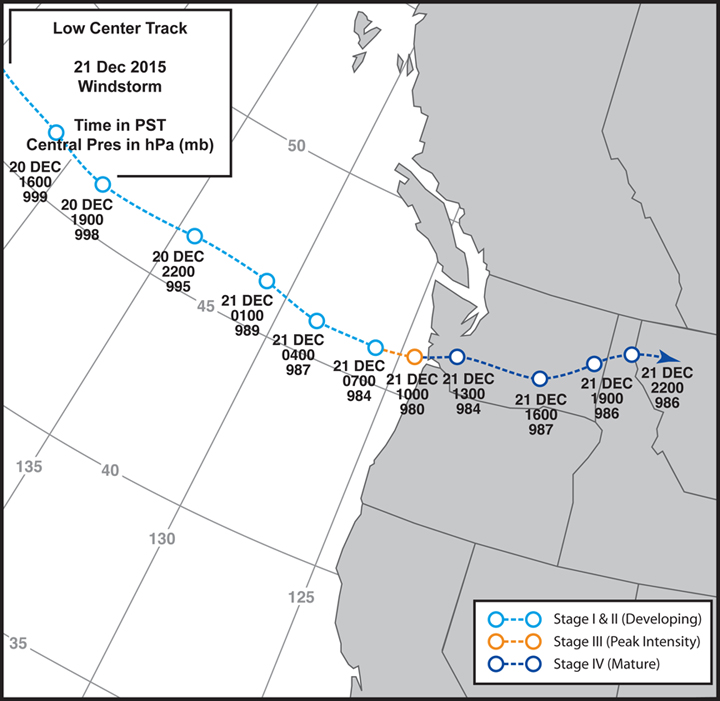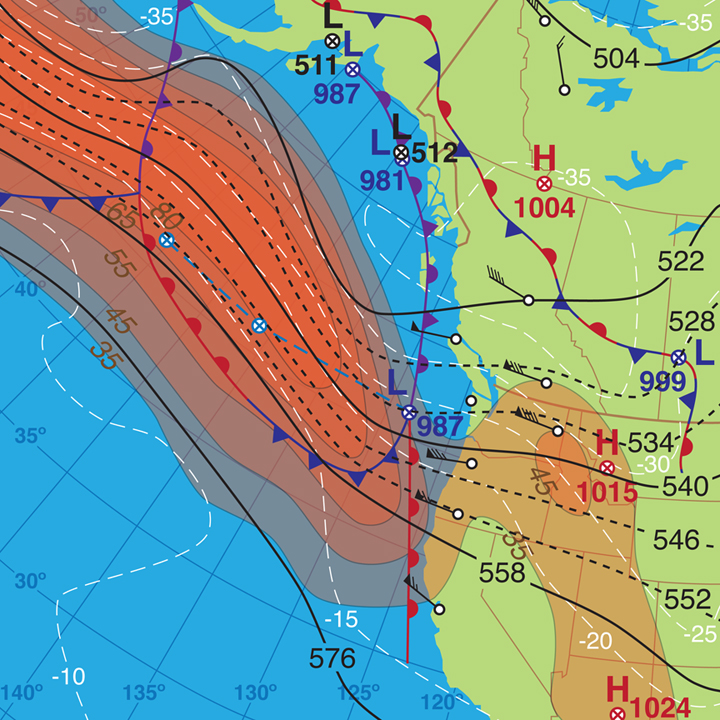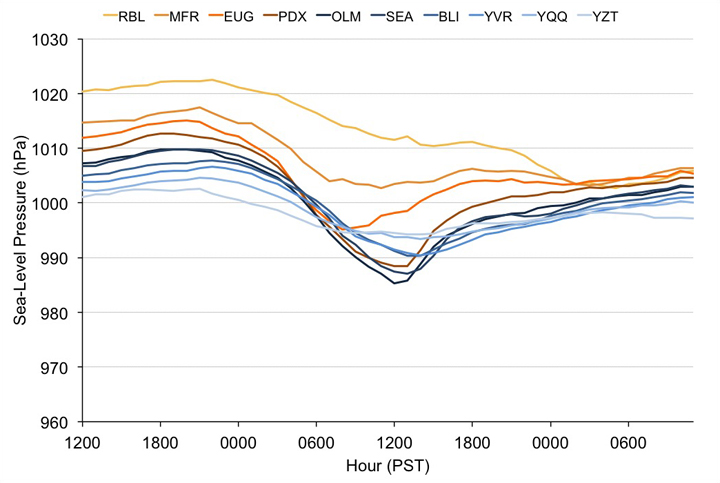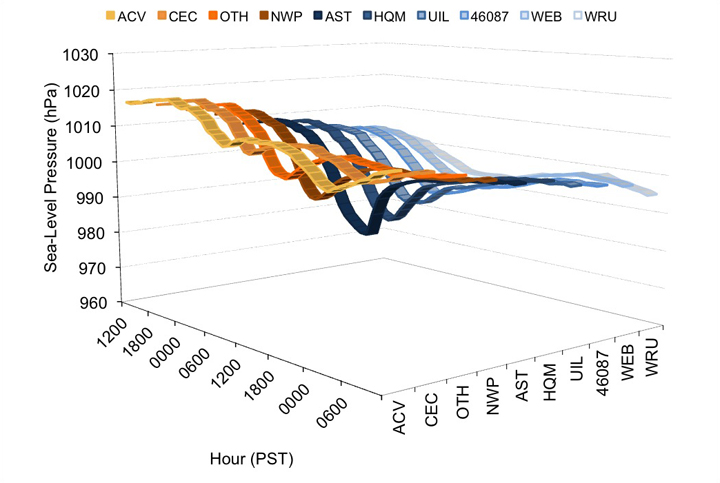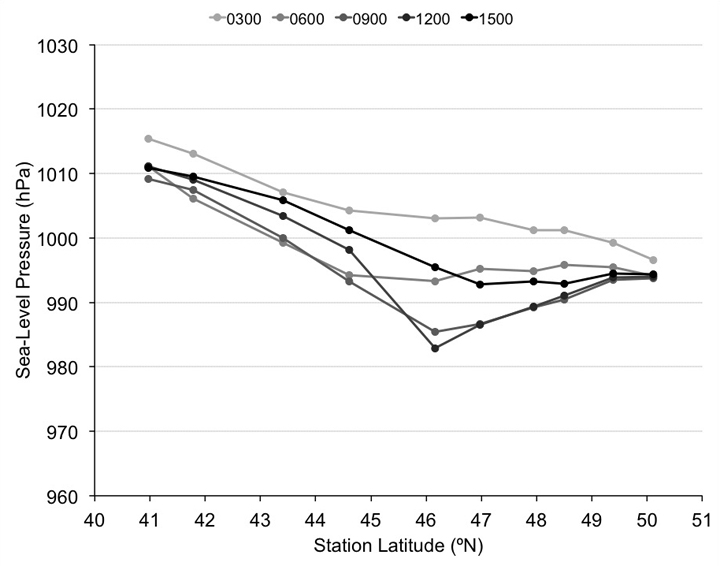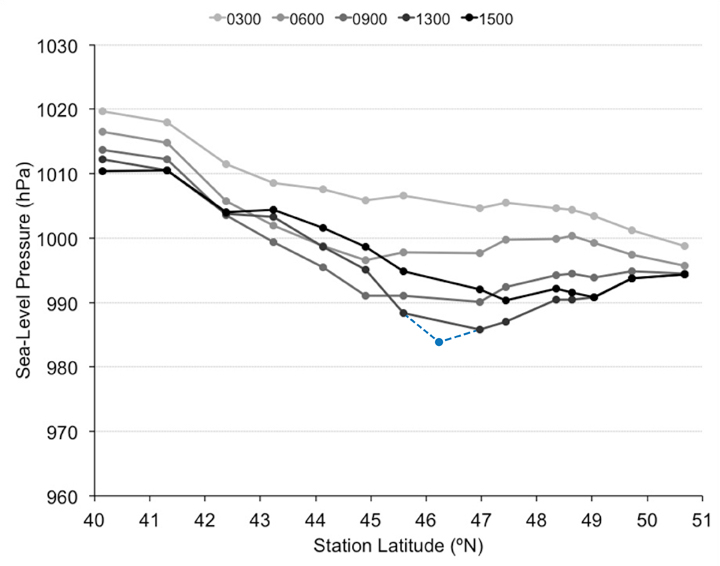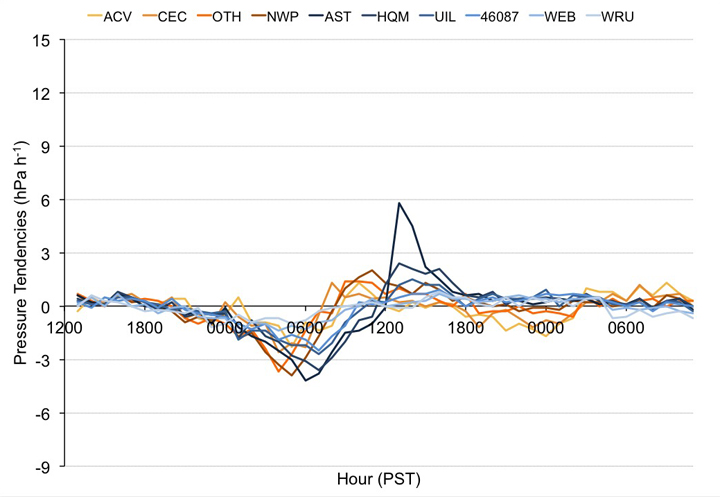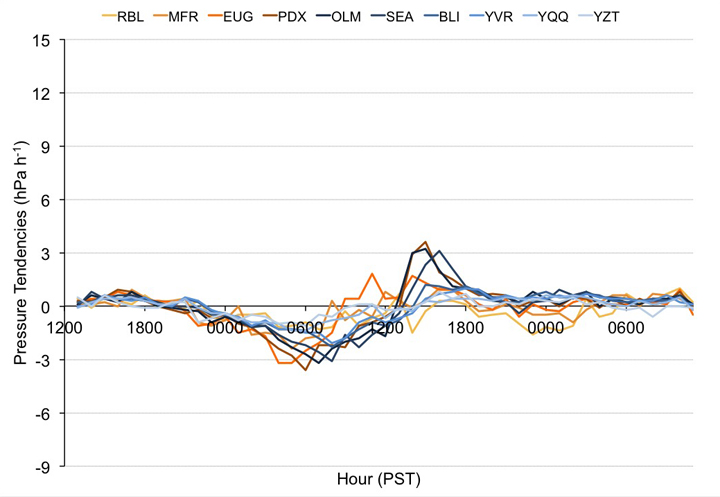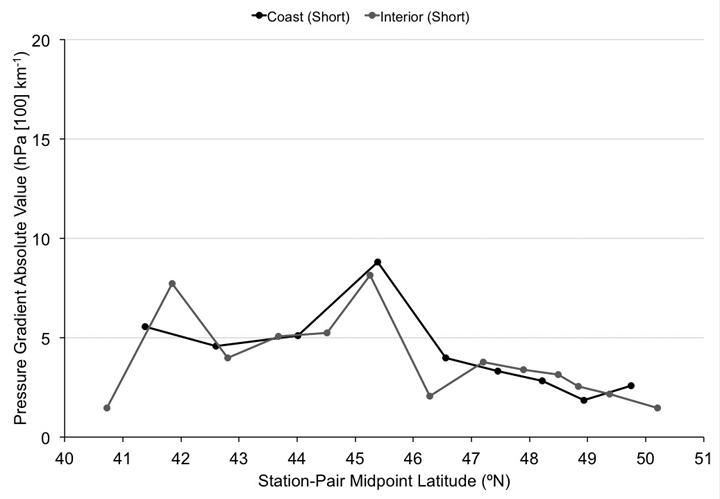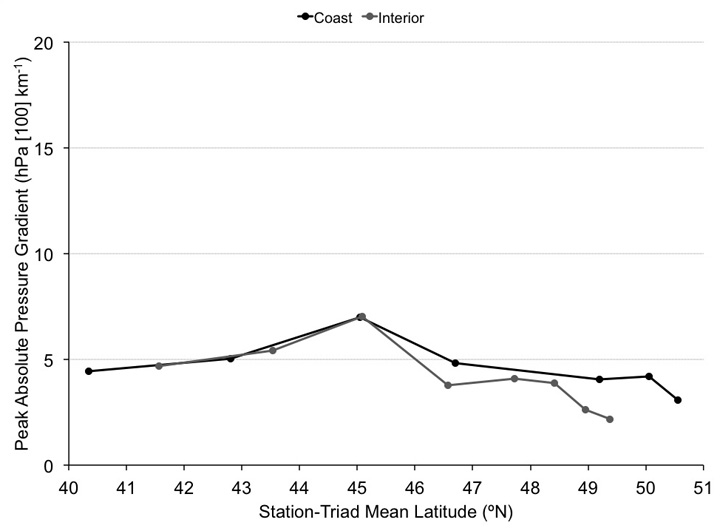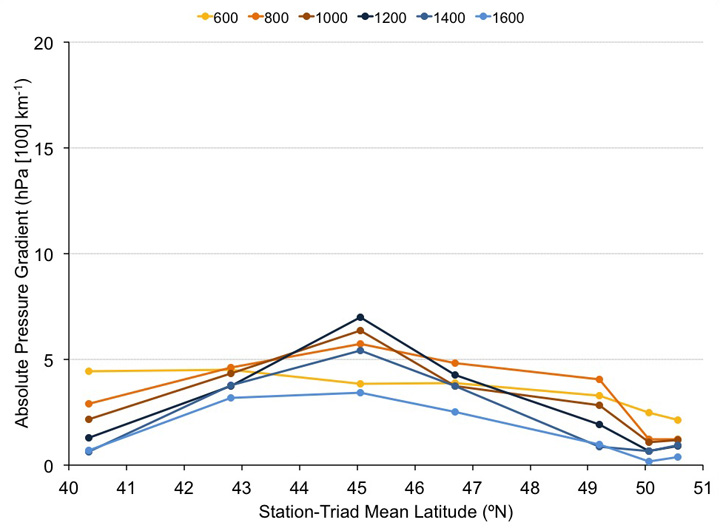Figure 1.1 above Peak gusts (mph and km/h) for the December 21, 2015 windstorm. Wind speeds are largely from long-term surface airways weather observation sites, data buoys, lighthouses and C-MAN stations, with limited data from other networks (e.g. RAWS). Stations with long histories are preferred because of the research focus on intercomparison of historic storms. Numbers preceded by a tilde (~) represent the highest gust report in a dataset that has been interrupted at the height of the storm--usually data loss is from power outages. Values in italics are gusts estimated from peak wind, usually 2-minute or 5-minute, using a 1.3 gust factor. Stations with high-wind criteria gusts (≥58 mph or 93 km/h) are denoted with white-filled circles. Isotachs depicting ≥60 mph (~100 km/h) gusts are included to highlight the regions that had concentrations of the indicated magnitudes, with a 50 mph (80 km/h) line included to provide a better sense of the storm's wind distribution pattern. The track of the extratropical cyclone center is shown (yellow arrow). Click on the map to see a larger version. Here is a map listing the station names. |
A classic west-jet extratropical cyclone, the December 21, 2015 windstorm tracked across the northeast Pacific almost without an deviation from a nearly due east path until landfall in the vicinity of Long Beach, Washington (Figure 1.1). Also in classic fashion for this track type, referred to here as the "Storm King" path, the highest winds were focused on the immediate south side of the low-pressure center. Sheltered stations along the Oregon coast received wind gusts of 45 to 60 mph (70 to 95 km/h), with exposed sites reporting speeds of 60 to 75 mph (95 to 120 km/h). This is in sharp contrast to much of the Washington coast where peak gust speeds at the more sheltered locations were generally in the range of 20 to 40 mph (30 to 65 km/h), with some exposed locations reporting gusts approaching 50 mph (80 km/h). For the interior sections, the strongest winds were focused on the Willamette Valley, where peak gusts ranged from 40 to 55 mph (65 to 90 km/h), with the highest speeds being concentrated in the vicinity of Portland. In southwest Oregon, interior gusts climbed relatively high for the narrow, often wind-sheltered valleys, roughly 25 to 35 mph (40 to 55 km/h), marking a fairly vigorous frontal passage. The Washington and British Columbia interior generally received gusts of 20 to 25 mph (30 to 40 km/h), save for the extreme southern section where Kelso and Vancouver reported gusts around 45 mph (72 km/h). Over the interior waterways, gusts tended to be 30 to 45 mph (50 to 70 km/h). The peaks at most stations at the north end of the Willamette Valley were associated with the passage of a strong and well-defined bent-back front, and had a somewhat unusual SW to WSW direction. Areas typically sheltered during more common southerly windstorms were in some cases more directly hit by the December 21, 2015 event, toppling vulnerable trees and catching some people by surprise. A near-surface wind direction counter to the mean orientation of the terrain (south to north) likely reduced the peak wind speed potential. West-jet storms with a similar track include January 7-8, 1990 and January 11, 1988. These earlier extratropical cyclones produced higher interior wind gusts than the December 21, 2015 windstorm, with speeds reaching and exceeding 60 mph (95 km/h). Indeed, the 2015 storm ended up being a marginal high-wind event on official anemometers, with gusts topping out at 55 mph (90 km/h). This is below the official 58 mph (93 km/h) minimum for high wind gusts, but is right at the cutoff used here on The Storm King for windstorm climatological studies. When considering gust speeds of 50 mph (80 km/h) or more, the spatial distribution is quite similar to other Storm King events from history. In this regard, the storm had the outcome for its track class. |
